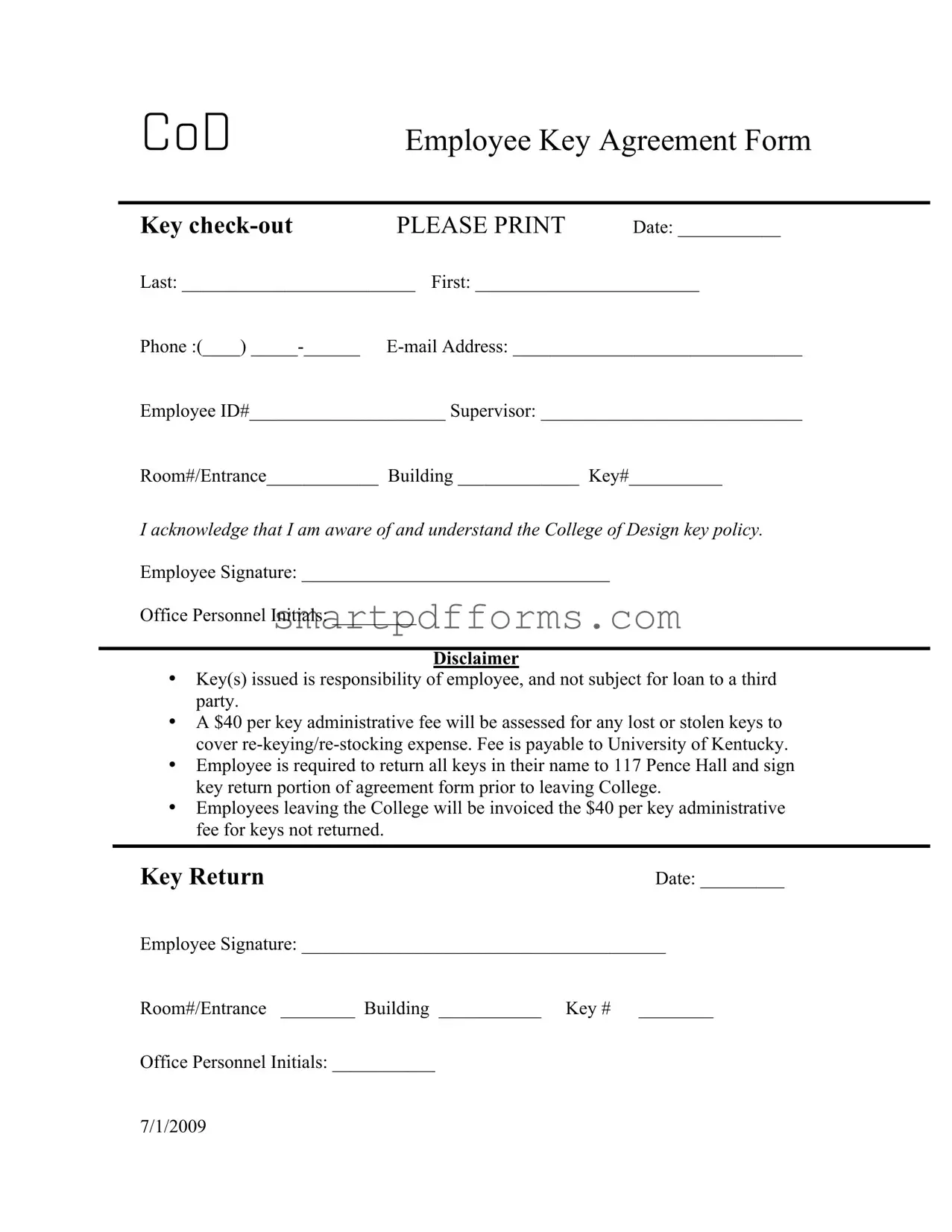Blank Key Agreement PDF Template
The Key Agreement Form serves as a crucial document for employees to acknowledge receipt and responsibility of keys issued by an institution, detailing the terms under which these keys are provided, used, and eventually returned. It outlines specific conditions such as the prohibition of key lending, the imposition of fees for lost or stolen keys, and the procedure for key return upon departure from the institution. For a streamlined process in managing access and ensuring security, completing this form is essential for both employees and the administrative bodies involved.
To proceed with filling out the Key Agreement Form, please click the button below.
Make This Document Now

